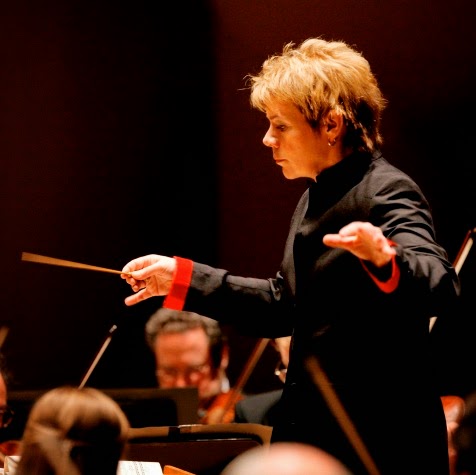At the Baltimore Symphony Orchestra's celebration of its 10th anniversary at the Strathmore Music Center Thursday night, fireworks and stars ignited an explosion of sorts when Garrick Ohlsson played Sergei Rachmaninoff's Piano Concerto No. 2 in C minor, Op. 18.
The audience sat enthralled during the performance and at the end, called the pianist back four times.
Before the show began, I announced to a woman who sat two seats from me, hugging the wall, that I had come for Rachmaninoff.
"Oh," she smiled rather meekly, "I am new to classical music."
Well, our seats aren't the best, I whined (we were on the wrong side of the piano), but it's the sound we came to hear, not the visuals, and besides, I said, the price is right.
 Garrick Ohlsson in Prague, May, 2013/YouTube
Garrick Ohlsson in Prague, May, 2013/YouTubeFrom our seats we could not see Mr. Ohlsson's hands as they raced up and down the keyboard like lilies gracefully landing at the speed of an asteroid upon a pond.
And then...ouch!
When he reached certain points in the composition, his fingers withdrew quickly as if he were striking a hot stove.
During some of the piece, while he played on, his eyes moved from the keyboard, and he watched Conductor Marin Alsop. Between the first and second movements when some in the center section began to applaud as they are wont to do, Mr. Ohlsson winced as he looked down upon the keys.
Two years ago I ventured out to Strathmore to hear Mr. Ohlsson play Rachy's Third Piano Concerto, another stellar performance.
Before the music began last week, the announced program was delayed about 15 minutes by BSO leaders giving each other thanks, and then a huge screen dropped above the orchestra to reveal a bird's eye view of Mr. Ohlsson's hands which we were able to see, after all.
I wondered how many would call the screen a distraction, and at intermission, another seatmate and I discussed our mutual reactions. We were both magnetized by the video and at times, had to force our attention back to the music.
"I suppose people will complain," he said, and I agreed.
It's hard to please everyone, I said, but the orchestras and symphonies now must pull out all stops to attract the younger crowds and whatever interaction it takes, it takes.
"Look around," he said. "Where are the young ones?" and nodded to a fellow with a red beard in the center section who actually didn't look too young to me: "There's one." One. About 35? (Is 35 "young"?)
Whatever.
On my other side sat a lovely couple from Richmond who drove up to see "our Marin" conduct the BSO.
 Conductor Marin Alsop/BSO photo
Conductor Marin Alsop/BSO photo"She was our assistant conductor for a year," the woman said proudly.
I told them Conductor Alsop was quite popular "up here" and could probably be elected governor of Maryland, for if a Republican can be elected governor of Maryland....
"We knew she would not stay long in Richmond and would move up," said the woman's husband. The woman wore a finger purse (!) and frequently used her opera glasses (we were seven rows from the front) which were trimmed in gold and silver.
She asked me if there's a sign law up here.
Pardon, I said: A sign law?
"The signs here are so small, we can't find anything!" she exclaimed.
The second half of the show was a huge success, too, with Ottorino Respighi's Church Windows and The Pines of Rome.
Several days later I noted among the pages of the Washington Post that the negative Robert Battey (what does he like?) was indeed annoyed by the giant screen and pooh-poohed the evening, wondering what in the world did the performance by a teenager, Evelyn Song (really, that's her name) who played the violin with the BSO's concertmaster, Jonathan Carney, at the beginning of the evening, mean exactly.
I'll tell you what it meant, Mr. Battey: The BSO rightfully was bragging about its outreach to the youth of the area in its two short videos, demonstrated by a 16-year-old virtuoso on the violin. That's what it meant. What kind of understanding does that require?
Besides, Mr. Battey, can't your newspaper find a more current photo of Mr. Ohlsson than the old one it ran picturing the artist, not in the tails he wore Thursday, but in a 1970s suit which may have been shot at a rehearsal in Nebraska?
What a night at the concert hall!
A good reason to skip the Smithsonian's world religion lecture on Hinduism.
patricialesli@gmail.com















